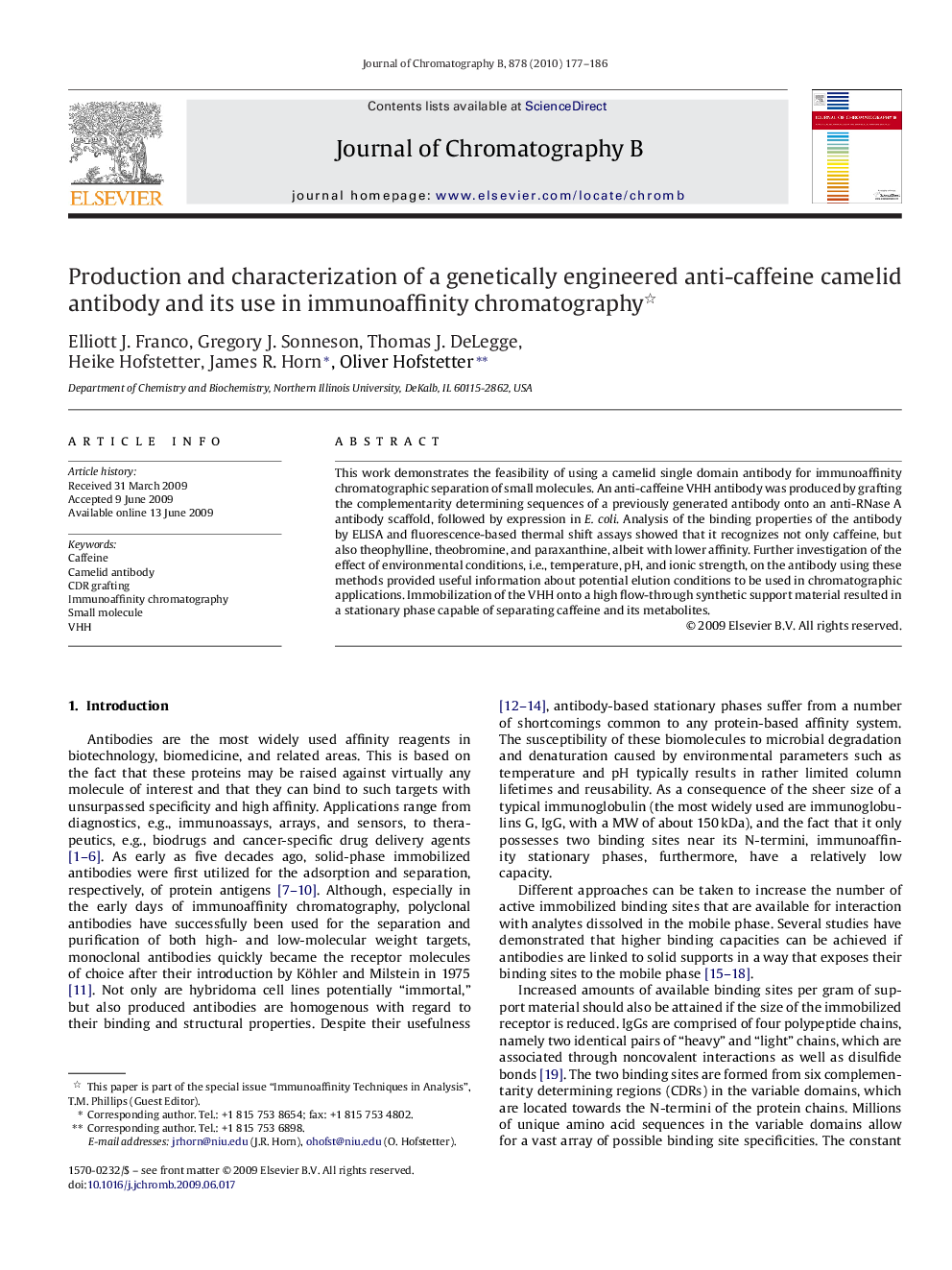| کد مقاله | کد نشریه | سال انتشار | مقاله انگلیسی | نسخه تمام متن |
|---|---|---|---|---|
| 1215365 | 966973 | 2010 | 10 صفحه PDF | دانلود رایگان |

This work demonstrates the feasibility of using a camelid single domain antibody for immunoaffinity chromatographic separation of small molecules. An anti-caffeine VHH antibody was produced by grafting the complementarity determining sequences of a previously generated antibody onto an anti-RNase A antibody scaffold, followed by expression in E. coli. Analysis of the binding properties of the antibody by ELISA and fluorescence-based thermal shift assays showed that it recognizes not only caffeine, but also theophylline, theobromine, and paraxanthine, albeit with lower affinity. Further investigation of the effect of environmental conditions, i.e., temperature, pH, and ionic strength, on the antibody using these methods provided useful information about potential elution conditions to be used in chromatographic applications. Immobilization of the VHH onto a high flow-through synthetic support material resulted in a stationary phase capable of separating caffeine and its metabolites.
Journal: Journal of Chromatography B - Volume 878, Issue 2, 15 January 2010, Pages 177–186